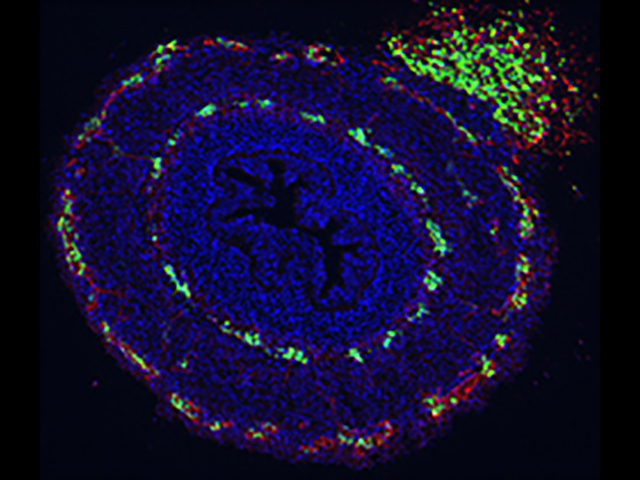
During embryogenesis, the formation of the enteric nervous system (ENS) begins with colonization of the foregut by a multipotent stem cell population that arises from the neural crest. These cells migrate rostrocaudally along the entire length of the gut mesenchyme to form the submucosal and myenteric plexuses of the ENS. Proper colonization of the gut by enteric neural crest-derived cells (ENCDCs) requires the coordinated regulation of their migration and proliferation, differentiation into multiple subtypes of enteric neurons and glia, aggregation into ganglia, patterning into two concentric plexuses, and circuit formation to form an interconnected functioning network. These processes rely on reciprocal interactions between ENCDCs and their microenvironment, including extracellular matrix and soluble factors, that are essential for proper cell survival, migration, proliferation, differentiation, and patterning. Perturbations of these processes can lead to neurointestinal diseases, including Hirschsprung disease (HSCR), a congenital disease that is characterized by the absence of enteric ganglia along variable lengths of the distal bowel due to failure of ENCDCs to complete their colonization of the gut during embryonic development.
In our lab we use mouse and avian embryos as model systems to study ENS development. Utilizing a variety of techniques, including retroviral-mediated gene expression, chick-quail chimeras, coelomic transplantation, organ culture techniques, and RNA-sequencing, we have characterized normal development of the ENS and have identified important roles for multiple different factors. These include endothelin-3, GDNF, and hedgehog signaling, extracellular matrix proteins (collagen XVIII, laminin, agrin), endothelial cells, and more. Understanding the molecular and cellular factors required for normal ENS development provides new insights into the pathophysiology of Hirschsprung disease and other neurointestinal disorders and allows us to develop novel diagnostic and therapeutic approaches for their treatment.
